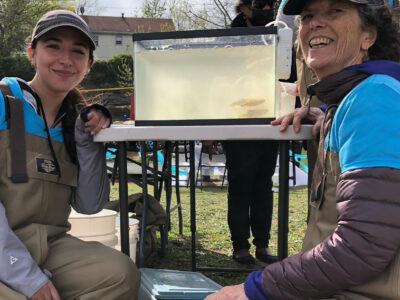This post is based on a White Paper produced by the Columbia Water Center for the workshop ‘Strategies for Sustaining Water, Energy and Incomes in North Gujarat,’ held on Jan. 4 in Ahmedabad, India. It was the kick-off event of an ambitious project to find solutions to the groundwater crisis in Gujarat, funded by the PepsiCo Foundation. More details of the project will follow this overview post.
—-

For more than three decades, the farmers in Northern Gujarat State, in India, have produced abundant food crops, and have had a thriving dairy industry. In order to make that happen, they have been using once plentiful underground water resources.
Because local aquifers are being replenished more slowly than the water is being withdrawn, groundwater tables have been falling throughout the period, and the situation has become so serious that North Gujarat’s future agricultural success is now in jeopardy. The more the water table falls, the deeper the wells must be, and the more electricity is required to pump the water out – and the more the water table will fall.
Farmers are the first to suffer: they have to continually invest in deeper wells and more powerful pumps, and even with these investments, the water is less plentiful and of poorer quality.
The state government and the utility companies, for their part, have had to finance and generate increasing amounts of expensive electricity for pumping, which they provide to the farmers at a subsidized rate. While the state’s expenditures on energy have been rising steeply, the benefit to farmers has stagnated or even declined, because the amount of water they have access to has in fact decreased.
The energy subsidy is currently structured so that farmers pay a flat rate, no matter how much electricity they use. While this type of subsidy provides for the immediate livelihood of the farmers, it also encourages overexploitation of water resources. Farmers have no motivation to do anything other than continue to deepen their wells and pump as much water as possible. The irony is that overusing the water will ultimately result in a complete collapse of the groundwater supply, putting them out of business entirely.

The futility of the system is already becoming apparent. In some places in Gujarat, the amount the government pays to subsidize groundwater pumping per agricultural hectare is more than the value of the crops produced.
Let’s take for example the Mehsana district of Gujarat. In this semi-arid region, agriculture accounts for around 90% of the total water use, followed by domestic and industrial, and more than 80% of the land area is under cultivation. Based on datasets supplied by the Groundwater Resources Development Corporation (GRWDC), ground water levels in the region have declined by about 80 meters in the last 30 years. The current levels are anywhere from 100 meters to 200 meters below the surface. Declines in ground water levels already average about 3 meters/year, and if agricultural use intensifies, this could double in the next decade.
Some of the water is being withdrawn from aquifers located below sea level. As a result, salt is already being detected as seawater seeps into the aquifers. This is a catastrophic turn of events, as once the seawater begins to intrude into the aquifer, it is irreversible.
Crop choices in the region tend to maximize cash value, rather than minimize water consumption. Even though more water is being used for irrigation, the value of the crops in fact barely exceeds the energy cost of pumping.
Changes in rainfall patterns due to climate change may also contribute to deepening the crisis.
It is in this setting that the Columbia Water Center and its local partners, including the Government of Gujarat itself, are actively looking for solutions. It is imperative to maintain local incomes and food production, but in the long run that won’t happen without major changes in policy and farming practice. In another blog post, we will look at a series of steps that are being taken in Gujarat this year to begin to reverse the groundwater crisis.
–




[…] Article on related work in Gujarat […]
I am the resident of Nagalpur, Mehsana District.While reading about flouride content in water, I accidentally landed on this page and got aware about the reason of water scarcity, it’s quality.
If by any ways I could contribute ,would like to be the part of this project.Currently I am in Virginia and make annual visit to Mehsana.
[…] Article about related work in Gujarat […]
[…] explained in a recent blog post, falling groundwater levels in the Northern regions of the state of Gujarat, India, are reaching […]
Thank you for your interest in the Columbia Water Center work in Gujarat. We are in the process of preparing a white paper for general release. It will be announced in our newsletter (subscribe: https://app.e2ma.net/app/view:Join/signupId:1418235/mailingId:208340356/acctId:1408600) and on our web site: http://water.columbia.edu/. A full description of our work in India can be found here: http://water.columbia.edu/?id=India
I do research on industrial pollution control in Gujarat and am very interested in water issues. Wish I’ve heard about the workshop – where in Ahmedabad was it held and was it open to non-Columbia affiliates?
Would love to read the white paper as well as any follow-up research – is there a link for the paper, and a dedicated page for the PepsiCo project?
Thanks very much,
Carla
I’ve been there during the summer, the drinking water situation was worsening with every passing day. Though Saurashtra has received good rains, due to the lack of force, water was not reaching dams.
It’s really great disaster for poorest population there.